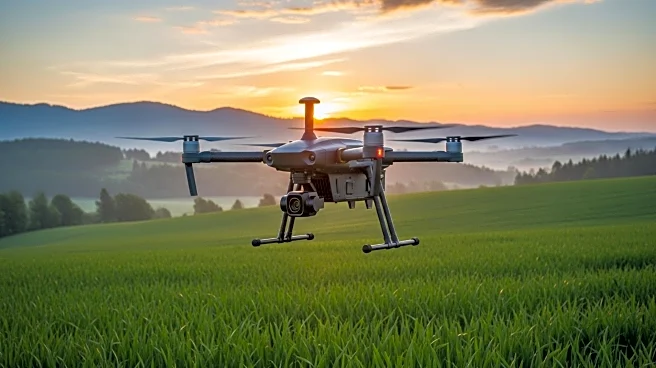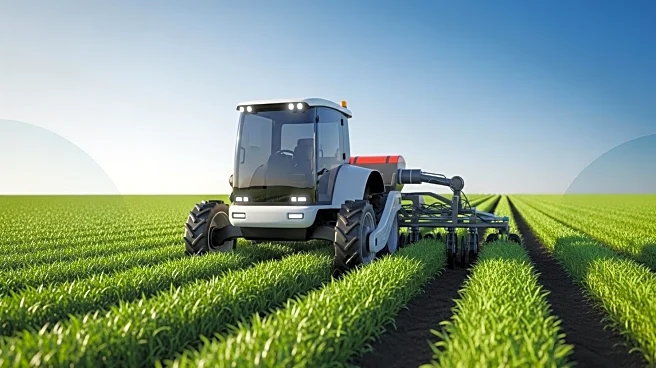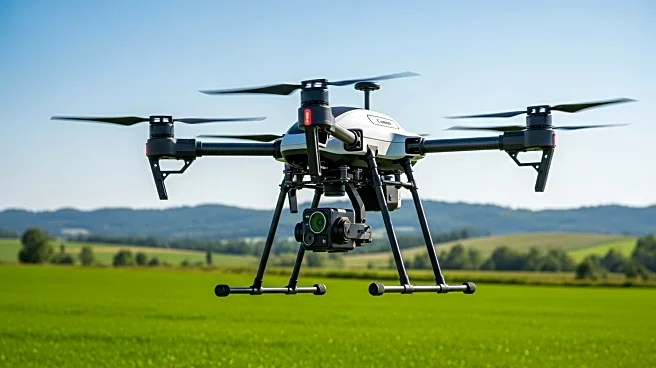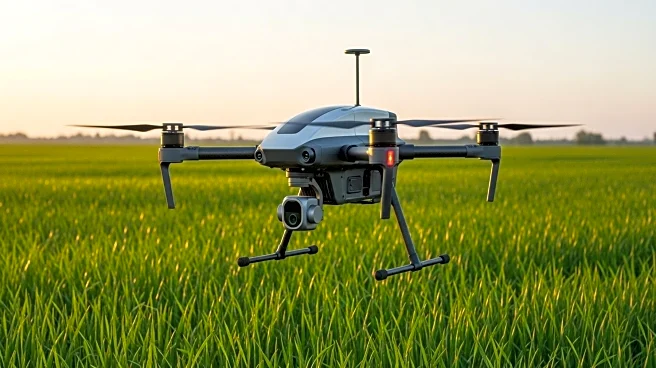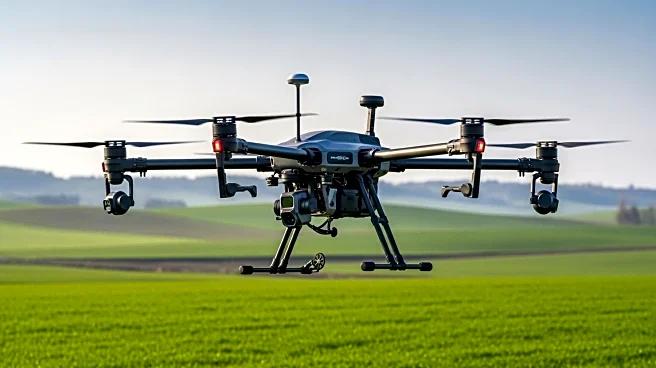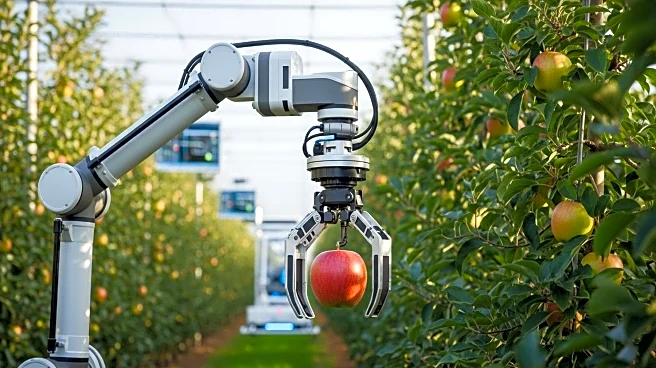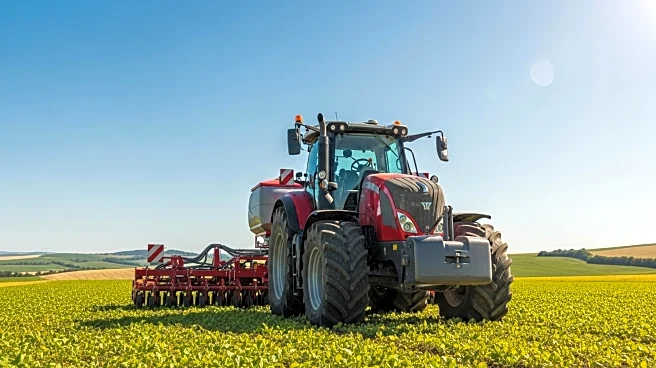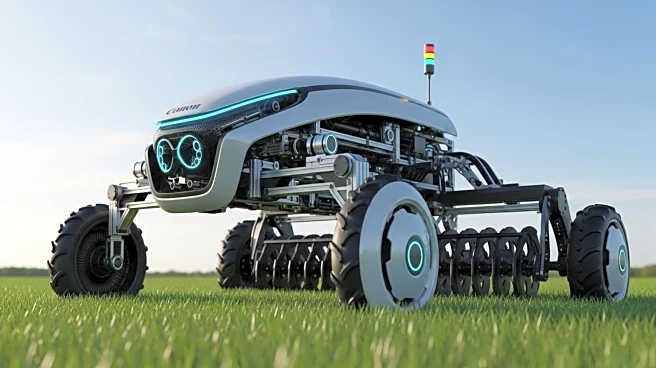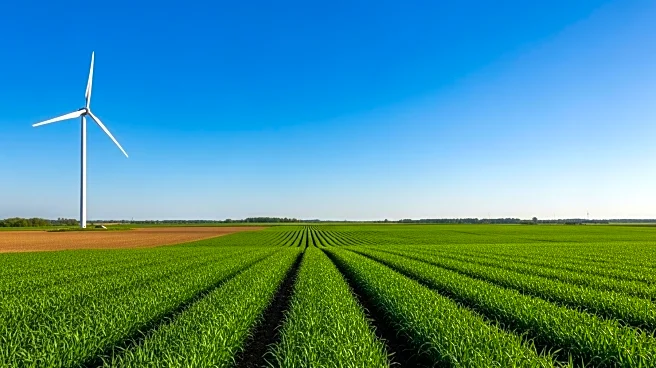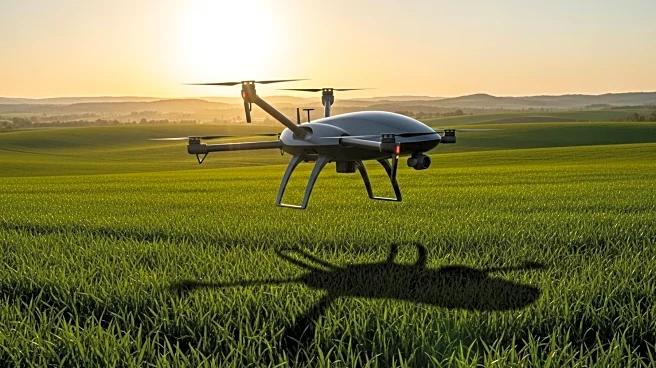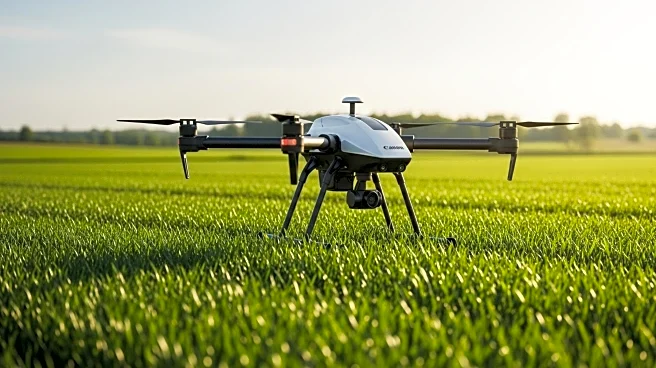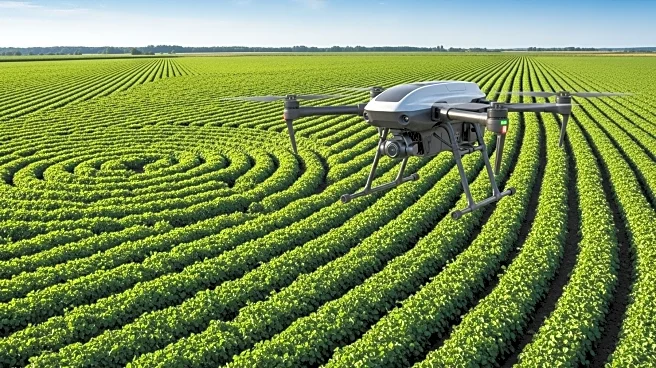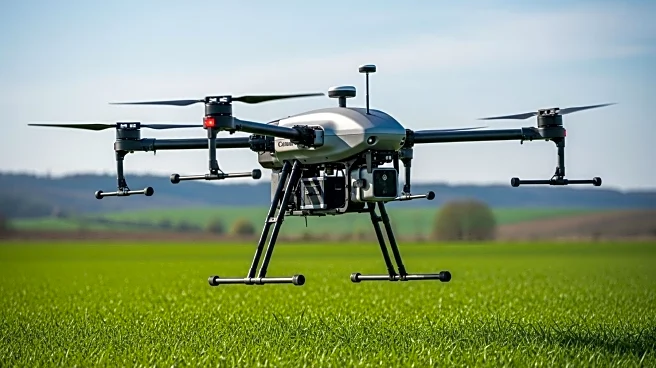What is the story about?
What's Happening?
The agriculture drones market is projected to grow significantly, reaching $8.03 billion by 2029, driven by the need to boost agricultural productivity and address labor shortages. The USDA's 2022 Census of Agriculture highlighted a loss of farms, underscoring the urgency for efficient farming solutions. Companies like ZenaTech, Draganfly, and AgEagle Aerial Systems are leading innovations in drone technology, offering multispectral imaging and precision agriculture tools. Favorable government policies and public-private partnerships are facilitating the adoption of drones, enhancing farm management and sustainability.
Why It's Important?
The expansion of the agriculture drones market is crucial for modernizing farming practices and improving crop yields. Drones offer precise data collection and analysis, enabling farmers to make informed decisions and optimize resource use. This technological shift is essential for addressing global food security challenges and adapting to climate change impacts. The market growth also presents opportunities for tech companies to innovate and expand their offerings, while farmers benefit from increased efficiency and reduced costs.
What's Next?
The agriculture drones market is expected to continue its rapid growth, with new product launches and strategic partnerships driving innovation. Companies may focus on enhancing drone capabilities, such as AI integration for better data analysis and decision-making. Regulatory support and subsidies could further accelerate adoption, encouraging more farmers to utilize drone technology. As the market evolves, stakeholders will need to stay informed about technological advancements and regulatory changes to capitalize on emerging opportunities.
Beyond the Headlines
The rise of agriculture drones raises ethical and cultural considerations, such as the impact on traditional farming practices and rural communities. While drones can improve efficiency, they may also lead to job displacement, necessitating retraining and education programs for affected workers. Additionally, the integration of AI and drones in agriculture raises questions about data privacy and security, as well as the need for robust regulatory frameworks to ensure responsible use of technology.
AI Generated Content
Do you find this article useful?
